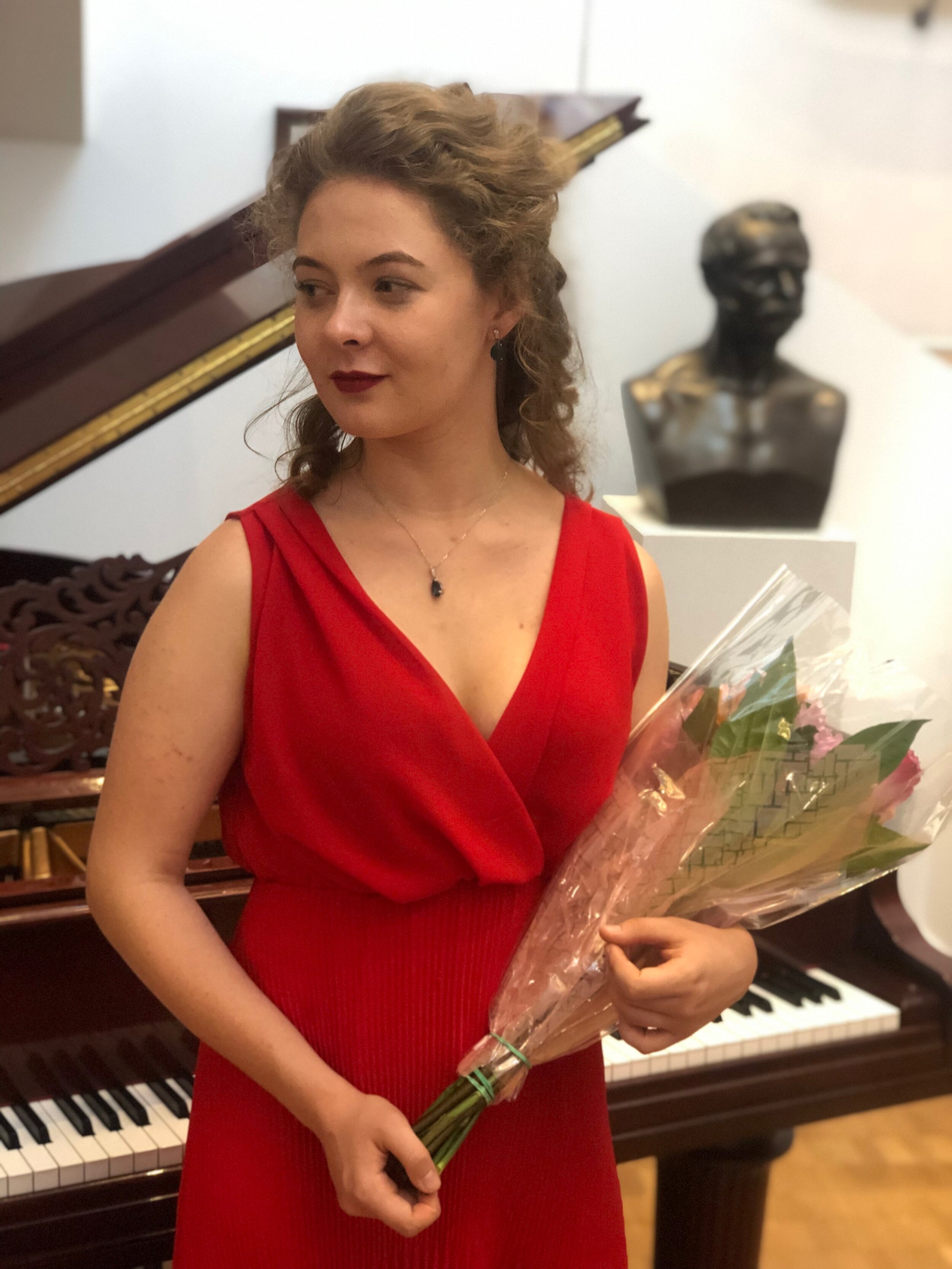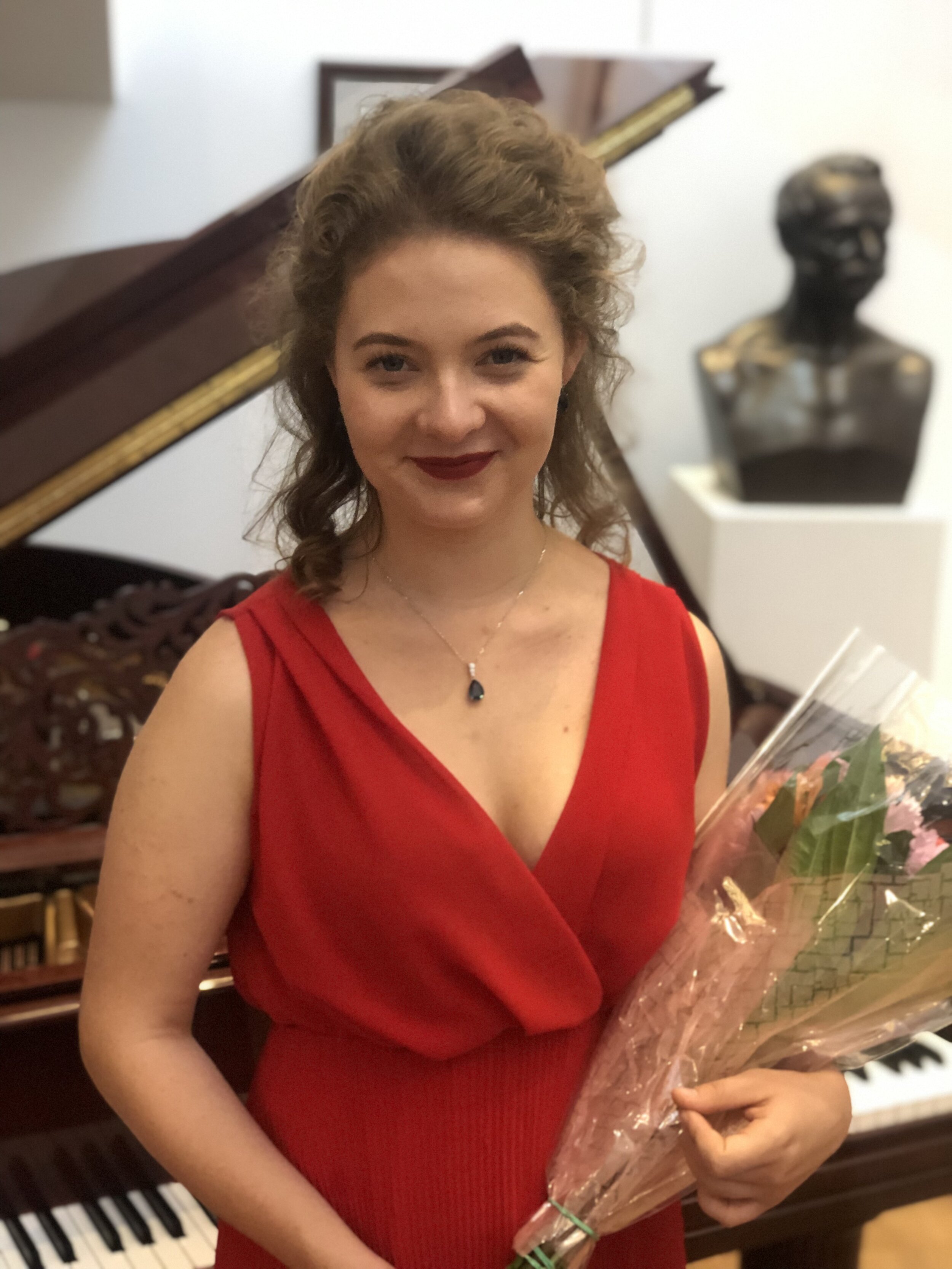Breaking The Fourth Wall
There is a popular conception that concert pianists are privileged relics of an elitist past who separate themselves on elevated concert stages and red carpets to perform esoteric hour long sonatas and are hopelessly disconnected from today’s realities.
One of the underlying principles of the Spirit of Harmony concert series is to focus on bringing a reimagined concert format directly to an audience in listeners’ own settings. However, this has required dismantling my conceptions of what a concert should be. I have been training my entire life to create perfectly crafted and polished live performances presented according to a staged routine in a designated performance venue. The first few weeks of Zoom performances were physically and emotionally unsettling for me because they completely shattered my ‘normal’ performance experience. Due to logistical and HIPAA concerns, my initial concerts were performed in front of a blank webinar screen where I could see myself performing in mirror image in some type of dystopian alternative reality. I felt like I was transmitting large amounts of energy into the void of a screen that emitted a stale silence and didn’t provide the energy I am used to receiving from a live audience.
Pictured: My first recital at age 3. My favorite part was getting my first bouquet of flowers.
While I was practicing for my first major solo recital at 8 years old, my mother would drop books, rustle programs, move her chair around, ring the phone, cough and yawn to prepare me to ignore distractions I might hear during my actual recital.
The usual pitfalls and distractions I have been trained to deal with during a typical performance were suddenly altered. During Zoom performances, I am often confused when I hear none of the usual performance background sounds but instead hear dogs snoring, housemates walking around, and regular household sounds. Distractions have included an iPad falling on my hands mid-performance, an iPhone falling off a stack of music and into the piano during a particularly moving section, and a hospital poster that fell over about 5 times throughout a live performance. My mind is now split between performing, ensuring all of the technology work correctly, and trying to create a rapport with my hidden audience. Spaces between musical selections are no longer dedicated to mental preparation for the next piece; instead I am focused on connecting with my audience over a chat screen and creating an ongoing conversation with regular and new listeners.
A recent press release draft I was reviewing wrote in addition to standard concert repertoire, I also ‘consented’ to play modern standards such as Disney pieces. I immediately emailed back requesting the editor remove the word ‘consented’ because I want to eliminate the idea that a concert pianist must only perform lofty classical selections from the Western Canon (whatever that means). I’m not graciously ‘consenting’ to play popular pieces as a one-time concession; I am actively broadening my repertoire to emphasize music is for everybody and it doesn’t have to be restricted to a narrow genre to be meaningful. We all experience life through a variety of lenses and all types of music from popular to classical should be available to individuals processing the unimaginable in hospital beds.
These virtual performances don’t follow a typical performance format; instead my audience can see behind the scenes, that is, my piano covered with music as I switch between music books and iPad scores and talk about the pieces as part of a casual conversation instead of an academic ‘performance lecture.’ Sometimes I change the order of the music to fit the mood and comments I receive on the chat. I’ve added in pieces at last minute to honor a request and then hear about how each piece, from Pachelbel’s Canon (a piece I would usually never program) to jazz from the Big Easy has a special meaning in the lives of each listener. I am learning to listen to my audience instead of expecting my audience to just listen to me. What would you like to hear? Often the response is, I love classical music, can you play something happy? Sometimes they ask if I could play Adele or their favorite song by Josh Groban. While classical musicians love to talk about music as a universal language, I am trying to be aware everybody connects with a different avenue of music. That is why I am focusing on providing a wide range of musical options often organized along emotional categories instead of by genre.
This shift has also dismantled my conceptions of what music I should be playing. Studying classical piano has often meant focusing on playing the most technically and emotionally difficult music as soon as possible while largely ignoring a swath of music labeled ‘intermediate’ or ‘popular’ such as the Moonlight Sonata by Beethoven. I have often been worried about publicly releasing my hospital concert programs for fear they wouldn’t be considered ‘difficult’ enough or ‘classical’ enough. “Remember you’re not a cocktail pianist” I was told by a well-meaning family member. What I’m learning is every piece of music has its own place and unique meaning for each listener and at the end of the day, it really isn’t about me.
During a virtual round with a doctor at a Boston hospital, we entered a patient’s room to ask if they would like to hear some live music. The elderly patient was obviously extremely disoriented and struggled to properly communicate. It turned out the patient was Russian and couldn’t speak English and the nurses hoped listening to some live music would calm him down. I played Bach’s Prelude in C Major, which I hoped he would recognize, and sure enough his eyes lit up and he indicated he wanted to hear more. I kept on playing various pieces, thankful for our mutual love of music that transcended so many boundaries between us.
I am learning to break the physical divide of a performance stage or computer screen to share the performance process with my audience as opposed to relegating my audience to passive observers of a polished performance result. I think the closest analogy I can use to describe this shift is breaking the fourth wall of a concert stage. I began to relax and enjoy these mini concerts when I shifted my perception from ‘performing music’ to ‘sharing music’ and focused on breathing in solidarity with my audience. It is a journey I hope to continue as I add in-person performances back into my life.
With the same goofy smile after a performance at Steinway Hall, NYC mainly because I got more flowers.


